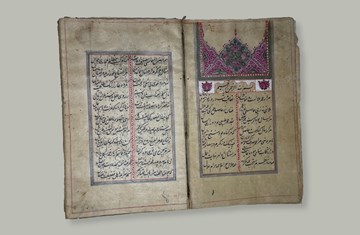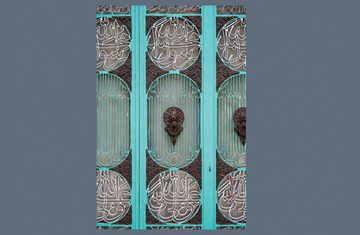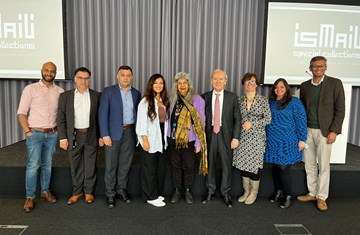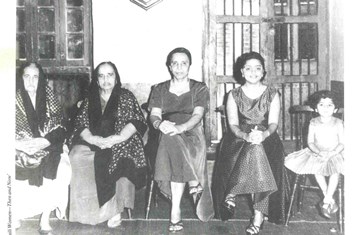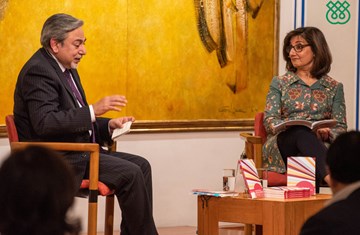The Emergence of Shi‘i Sufism. Interview with author Alessandro Cancian

The Bayan al-sa'ada fi maqamat al-'ibada is a Qur'anic commentary (tafsir) by the Sufi master Sultān ʿAlī Shāh (d. 1909), which represents a synthesis between Twelver Shi'ism and Sufism.
In the first detailed study of this work in English, Alessandro Cancian explores the intellectual contexts of Iranian Shi'ism and Sufism and introduces the author and the text.
We sat down with Alessandro and asked him about his subject, his motivation to study the text and its relevance today.
We also link to a teaser video featuring Alessandro as well as Dr Omar Alí-de-Unzaga of IIS and Professor Sajjad Rizvi from the University of Exeter.
Could you tell us a little about Sultān ‘Alī Shāh Gunābādī: who was he and why is this work significant?
Sultān ʿAlī Shāh was a rather interesting personality, though very little known, and I explain why in the book. In some religious circles there was an anti-Sufi prejudice that until very recent times prevented him from being as renowned as he deserves. In the intellectually and religiously vibrant time that was nineteenth-century Iran, he was able to accomplish a phenomenal synthesis between many streams of the intellectual history of Islam: classical Sufism, Akbarian metaphysics and Twelver Shi‘i doctrine. In a way, these are typical features of the Qajar intellectual milieu. But it is Sultān ʿAlī Shāh who best brought them to fruition in a coherent system within the framework of an organised Sufi order.
What inspired you to write this book?
Perhaps the question would be better framed as “Who inspired you?”. More than two decades ago, a friend and colleague, a living member of the Gunābādī Sufi order, presented me with a copy of the commentary (Bayān al-saʿāda fī maqāmāt al-ʿibāda) that became the subject of my study, encouraging me to work on it. At the time, I was working on religious higher education in Shi‘i Islam, and I put aside the commentary for a while, reading parts of it from time to time and starting to intuit its potential. When I came to the IIS, I was further encouraged to work on it by Omar Alí-de-Unzaga, the Head of the Qur’anic Studies Unit. I made it my main line of research and it finally became a monograph.
Why was Sultān ‘Alī Shāh's Qur'an commentary so little known to date?
Sultān ʿAlī Shāh inherited the charisma of the first generation of masters; adding to that, a formal scholarly education and a philosophical pedigree enabled him to potentially appeal to a wider, and more influential, audience. However, the Bayān was the summa of his erudition and spiritual insight and, as such, it was met with scepticism, ostracism and even an accusation of plagiarism. It became somehow taboo among scholars and exegetes, often read and looted, but rarely openly acknowledged.
The commentary and its author were also subject to anti-Sufi prejudice – sentiments that were common among certain exoteric-minded Twelver Shi‘i circles and have a long history. When the Niʿmatullāhī masters returned to Persia from India in the late-eighteenth century, they were perceived as competitors in authority by some religious leaders, whose symbiosis with the court, since the Safavid times, meant prestige, wealth and influence. Among the reasons for the recrudescence of anti-Sufi sentiment at the turn of the eighteenth to nineteenth century, which often resulted in violence and persecution, was probably the fear of losing that clout at the hands of the popularity of the charismatic masters of the Niʿmatullāhiyya.
How are Sufism and Shi‘i Islam connected and how does this text throw light onto the development of Shi’i Sufism?
The history of the relationship between Sufism and Shi‘i Islam is a complex and to some extent vexed one, and coming up with a definitive answer would be problematic, and perhaps not even desirable. Yet the number of studies tackling various aspects of the relations between Shi‘i Muslims, including Ismailis, and Sufis, show how crucial this subject is to the intellectual history of the Muslim world and of Shi‘i Islam especially. In my book, I have tried to show how the Bayān may be looked at as a sort of foundational act of a new phenomenon in the history of Islam: the emergence of a Twelver Shi‘i, organised Sufi order, fully encompassing both the classical tradition of Sufism and all the doctrinal pillars of Twelver Shi‘ism.
In what ways are the text and its author relevant to today’s Iran?
The Sufi order of which Sultān ʿAlī Shāh Gunābādī was eponymous – the Gunābādiyya – is still alive and active in today’s Iran. It is probably the Sufi order in the country that has the most followers across the spectrum. From the working class to intellectuals, from the arts to the media, from the bazaar to the ruling class and the madrasa, openly or discreetly, members of the order are ubiquitous. It is an influential socio-religious community. The masters of the order command a huge amount of respect from the followers. While the order’s notables are not interested in politics as such, it is easy to understand how they can be frowned upon by parts of the state that hardly tolerate a competing authority. Therefore, everything related to the order and its intellectual life, in particular, such a powerful work as the Bayān, can be relevant to the intellectual and religious life in Iran today.
How does your work fit into the activities of the Qur’anic Studies Unit and the Qur’anic Studies Series?
Our unit is committed to showing and celebrating the plurality of approaches to the Qur’an through history and across a confessional spectrum and geographical breadth. My book taps into that aspect of the Qur’anic Studies Series, by analysing a neglected work and its approach to the Qur’an. It is, in a way, the point of view of a minority within a minority.
What's next on the topic?
There is a lot to do! A systematic study of the many other works of Sultān ʿAlī Shāh awaits, as does the vast written corpus of the other masters of the order. The character of Sultān ʿAlī Shāh’s son appears to be particularly promising. The interactions of the Gunābādīs and the other branches of the Niʿmatullāhiyya with the Nizari Ismailis and with the ‘Alid communities of western Iran and other forms of Shi‘i mysticism also look like fascinating avenues of enquiry. I would personally like to find the time and the opportunity to produce a visual companion to the study of Shi‘i Sufism, possibly an ethnographic documentary on the existing communities and their reality in and outside Iran. On the historical dimension, parts of the history of the Niʿmatullāhiyya in its Indian period remain obscure. Some research in this area has been recently carried out, but there is an untapped wealth of manuscripts in public and private collections in the Deccan that should be unearthed and studied.




